
At least they warned us at the ticket office!
Apart from the rather modern looking wooden horse it was the only mention.
Definitely no photographs of Helen - though someone had a "dress up and be photographed" booth.

Both fur us and the myriad archeologists before us.
The plan is basically three concentric walls. Built over successive periods.
To confuse though, the original bits were built on top of.
This is the outer eastern wall, "Troy VI" somewhere between 1700 and 1250 BC.
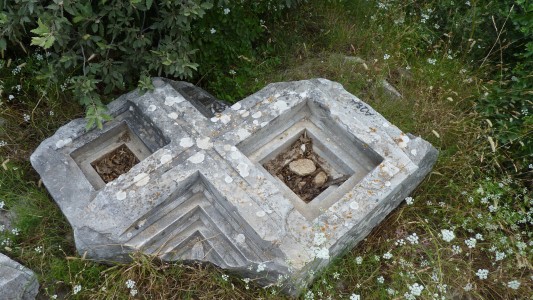
| 3000 - 2500 BC | I | Early Bronze Age |
| - 2300 BC | II | |
| -1700 BC | III - V | |
| - 1250 BC | VI | |
| - 1000 BC | VII | |
| - 85 BC | VIII | |
| - 1000 AD | IX |
The Trojan War (of horse fame) has various possible dates. Probably Troy VII which was burned. It occurs to me that the model horse outside is a tad large to fit inside the walls.
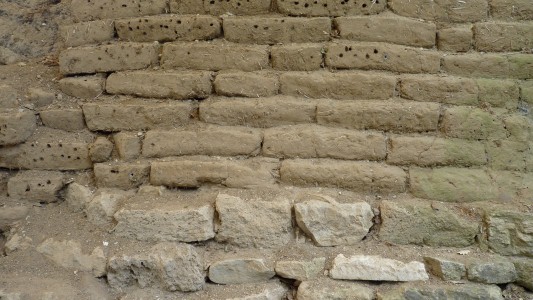
From this (replica) sun dried mud brick wall on top of stone foundation of the original Citadel Wall (II / III) to the later different styles of stone work.
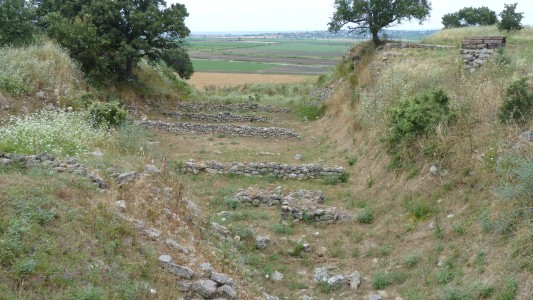
This is the 17m deep exploratory Schliemann Trench from one of the early archeologists.
He got all the way down to the first house foundations (Troy I) but his approach seems to have become frowned upon as he destroyed part of the upper levels.
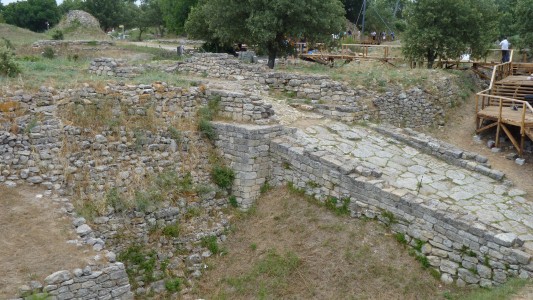
To the "Troy II" citadel.
The citadel burned, leaving a couple of metres for the archeologists to dig through.
Schliemann dug up Priam's Treasure close by, smuggled it out of Anatolia, and subsequently lost his licence to dig when his wife wore some of it in public.
A bit of a mismatch between Priam (who would have lived in Troy VI or VII) and the Troy II layer it was reputedly found in.
The finds are scattered in museums around the world, including Istanbul.
The Russians apparently justify hanging on to their bit, gained by looting German museums, as war compensation.
Such is the cynical world of greed, reputation, and spin which can subvert simple (and to us more valued) honesty.

Its at one corner of the citadel wall and probably formed part of the citadel base.
The stonework is particularly tight, without mortar.
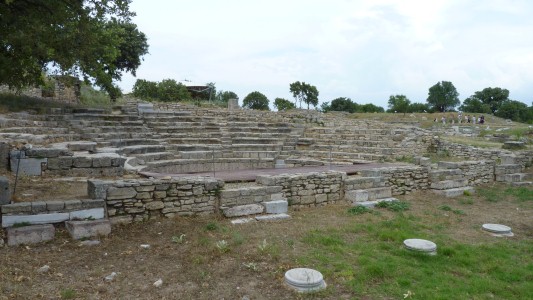
Troy was perhaps initially settled by Greeks.
Legends led to visits by the Persian King Xerxes (480 BC) and Alexander the Great (1334 BC) offering sacrifices.
Marketing 101 suggested another rebuild.
Troy was visited by Ali and Julian in 2013 but no sacrifices were made (apart from the customary and unavoidable entry fee).
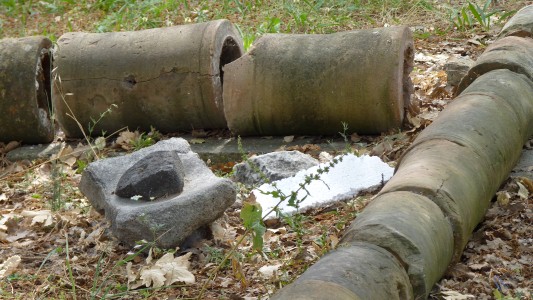
There is no archeological description or date attached to these terracotta pipe sections.
Hopefully whoever designed and installed the water supply also provided drainage.
We left Troy and camped in the bushes a short distance off the road after a few km.